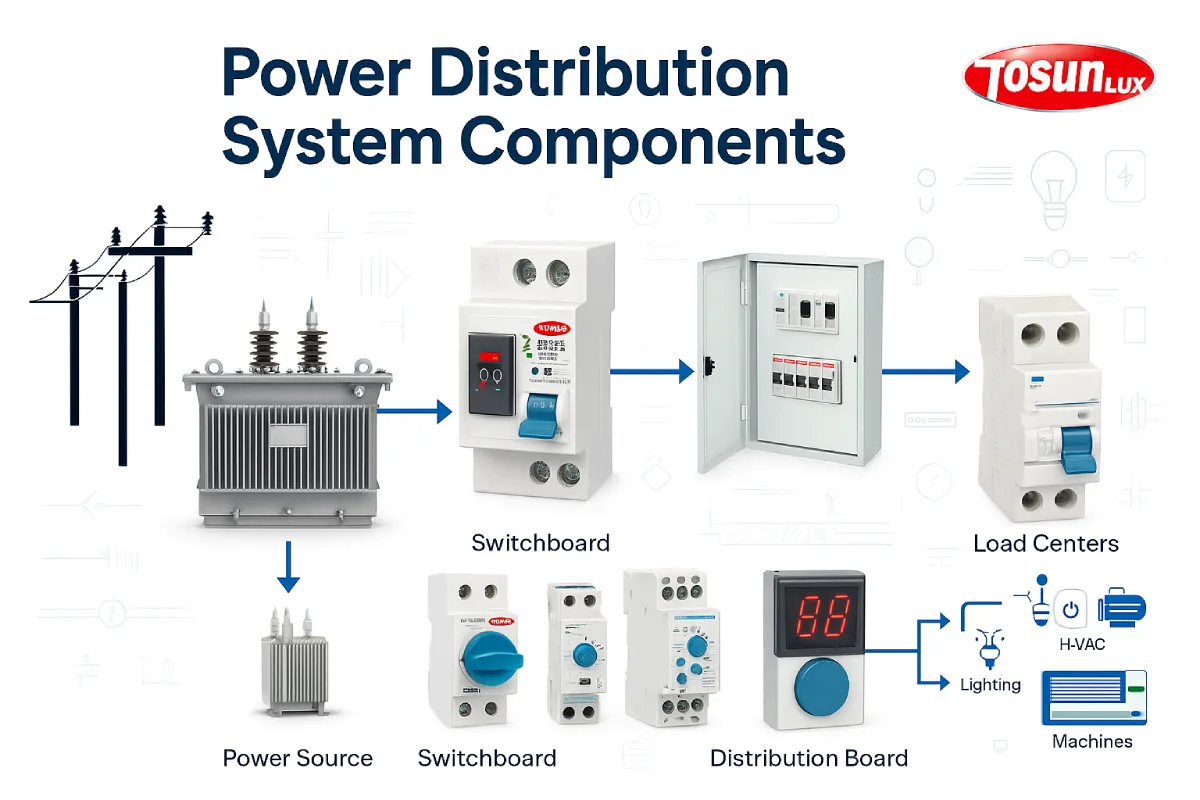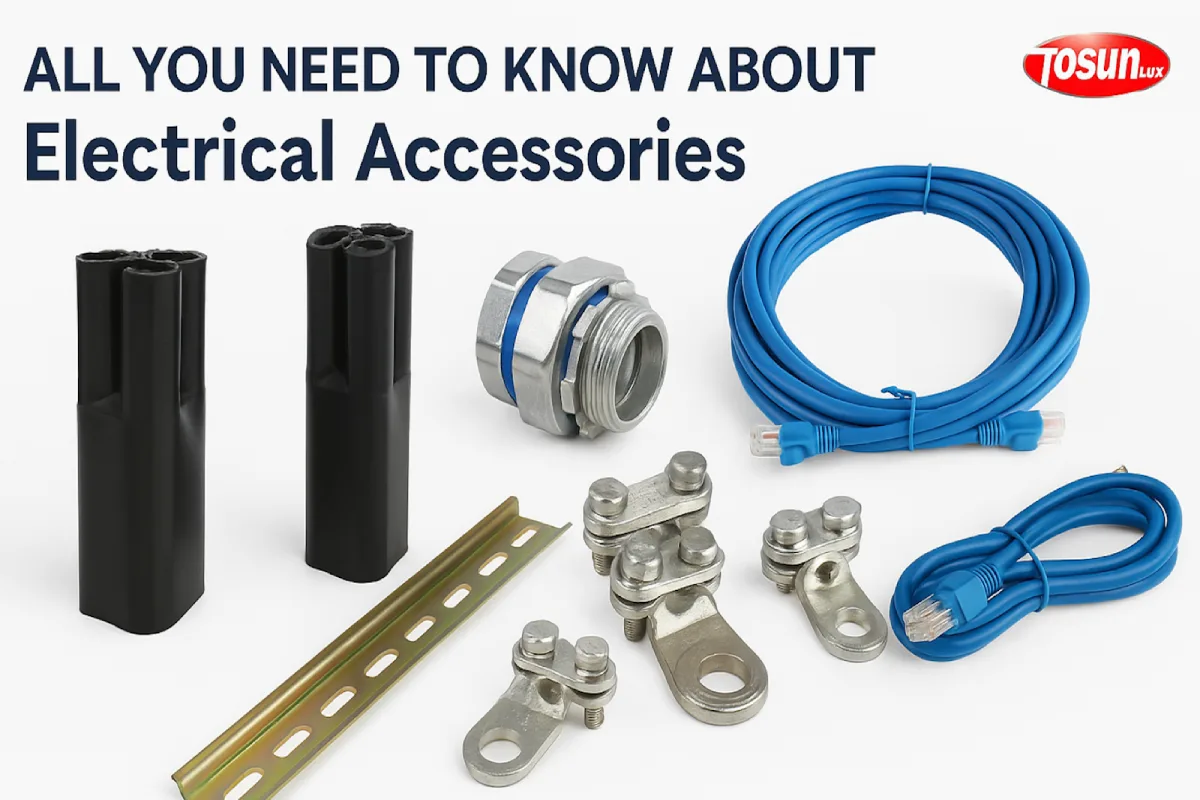Using an RCD Current Device For Solar Inverters
Table of Contents
ToggleAn RCD current device quickly disconnects power to prevent electric shocks and fires when it detects a fault. In this article, we explain what RCDs are, why they are vital for solar inverter systems, and how to choose the right one.
Key Takeaways
- Residual Current Devices (RCDs) protect against electric shock and electrical fires by detecting leakage currents and disconnecting the circuit quickly.
- In solar inverter systems, RCDs must be capable of detecting DC residual fault currents, as traditional AC RCDs may not function properly in the presence of DC leakage.
- Type B RCDs are particularly suitable for solar installations due to their ability to handle DC fault currents, while Type A RCDs can serve mixed loads but may not provide the same level of protection.
What is an RCD Current Device?

A Residual Current Device (RCD) is a crucial safety tool in electrical systems, designed to:
- Prevent Electric Shocks: Quickly disconnects the circuit when it detects a leakage current.
- Reduce Fire Risks: Helps prevent electrical fires by acting swiftly on fault detection.
How Does an RCD Work?
- Constant Monitoring: It continuously checks the balance of electrical current flowing through the live and neutral wires.
- Detecting Imbalances: Normally, the current entering through the live wire should equal the current returning via the neutral wire. An imbalance indicates a potential leakage, often through a person, which can cause electric shocks.
- Rapid Response: Upon detecting a leakage current, the RCD cuts off the power supply in about 30 milliseconds, significantly reducing the risk of injury or fire.
Key Features of RCDs
- Integrated Protection: Often found in consumer units, RCDs protect multiple circuits within a building.
- Versatile Detection: Capable of identifying both AC and DC residual fault currents, enhancing safety by quickly addressing any fault currents.
Benefits of Using RCDs
- Electrical Safety: Protects against electric shocks and ground faults.
- Equipment Longevity: Safeguards electrical equipment from short circuits, ensuring a longer lifespan.
- Essential for All Settings: Whether at home or in industrial environments, RCDs are vital for maintaining a secure and safe electrical system.
RCDs in Solar Inverter Systems

Solar inverters are the heart of any solar power system. They convert the direct current (DC) produced by solar panels into alternating current (AC) that powers homes and businesses. This conversion process can lead to unique challenges, making Residual Current Devices (RCDs) extremely important.
Why RCDs Matter for Solar Inverters

- DC Leakage Concerns: Faulty electronic equipment, like EV inverters or solar panels, can cause DC leakage. Traditional AC RCDs can’t detect these leakages, which is why addressing the DC component is crucial.
- Impact of DC Residual Fault Current: If the wrong RCD type is chosen, DC residual currents can impair RCD functionality. This can affect the reliability and safety of the entire system.
- Enhanced Protection: RCDs can work alongside surge protection devices to provide robust defense against surges and residual currents. This helps safeguard the electrical installation with overcurrent protection from various hazards.
Types of RCDs for Solar Inverters
- Type B RCDs: These are specifically designed to handle the unique currents from solar inverters, including DC fault currents. They are ideal for solar installations where DC leakage is common.
- Type A RCDs: They can detect alternating and pulsating DC residual currents, making them suitable for mixed loads. Although not as specialized as Type B, they still offer significant protection.
Choosing the Right RCD
Selecting the correct RCD type is crucial for safety and compliance with regulations, especially in systems with DC currents. Some manufacturers offer non-Type B RCDs that can handle higher DC currents without losing functionality, giving users more options.
By choosing the appropriate RCD type, we can ensure comprehensive protection for solar inverter systems, enhancing both safety and efficiency in our renewable energy efforts.
Summary
Understanding the role of RCDs in solar inverter systems is crucial for ensuring both safety and efficiency. These devices protect against electric shocks and fires by detecting and responding to residual currents, making them indispensable in modern electrical installations.
By choosing the correct RCD types, particularly Type B for handling DC fault currents, we can significantly enhance the safety and reliability of our solar power systems. Implementing these safety measures not only protects our investments but also ensures a sustainable and secure energy future.
Tel: +86-577-88671000
E-mail: ceo@tosun.com
Skype: tosunelectric
Wechat: +86-139 6881 9286
WhatsApp: +86-139 0587 7291
Address: Room No.1001 Wenzhou Fortune Center,Station Road, Wenzhou, China
REQUEST A QUOTE
WhatsApp us
 : +86-139 0587 7291
: +86-139 0587 7291 English
English Español
Español Русский
Русский Français
Français العربية
العربية Português do Brasil
Português do Brasil Українська
Українська Türkçe
Türkçe Polski
Polski Nederlands
Nederlands Italiano
Italiano Bahasa Indonesia
Bahasa Indonesia हिन्दी
हिन्दी اردو
اردو አማርኛ
አማርኛ Հայերեն
Հայերեն ไทย
ไทย Монгол
Монгол فارسی
فارسی Shqip
Shqip Ελληνικά
Ελληνικά


